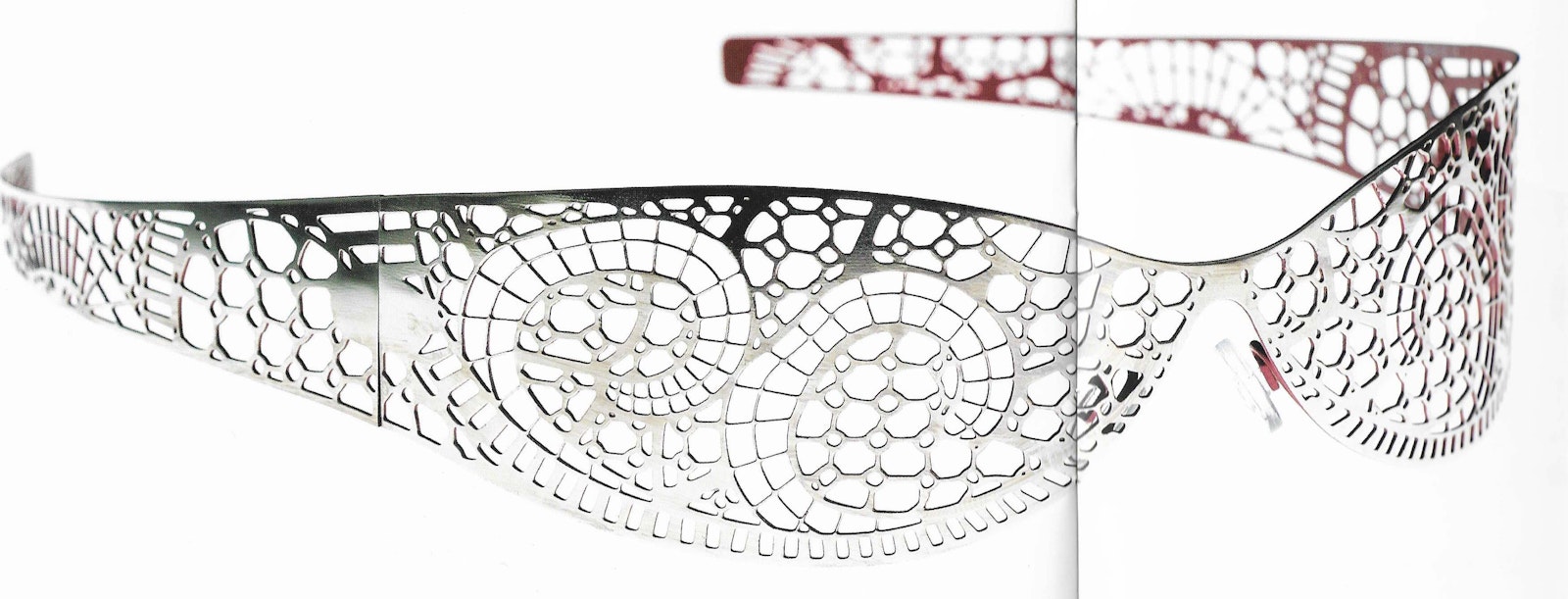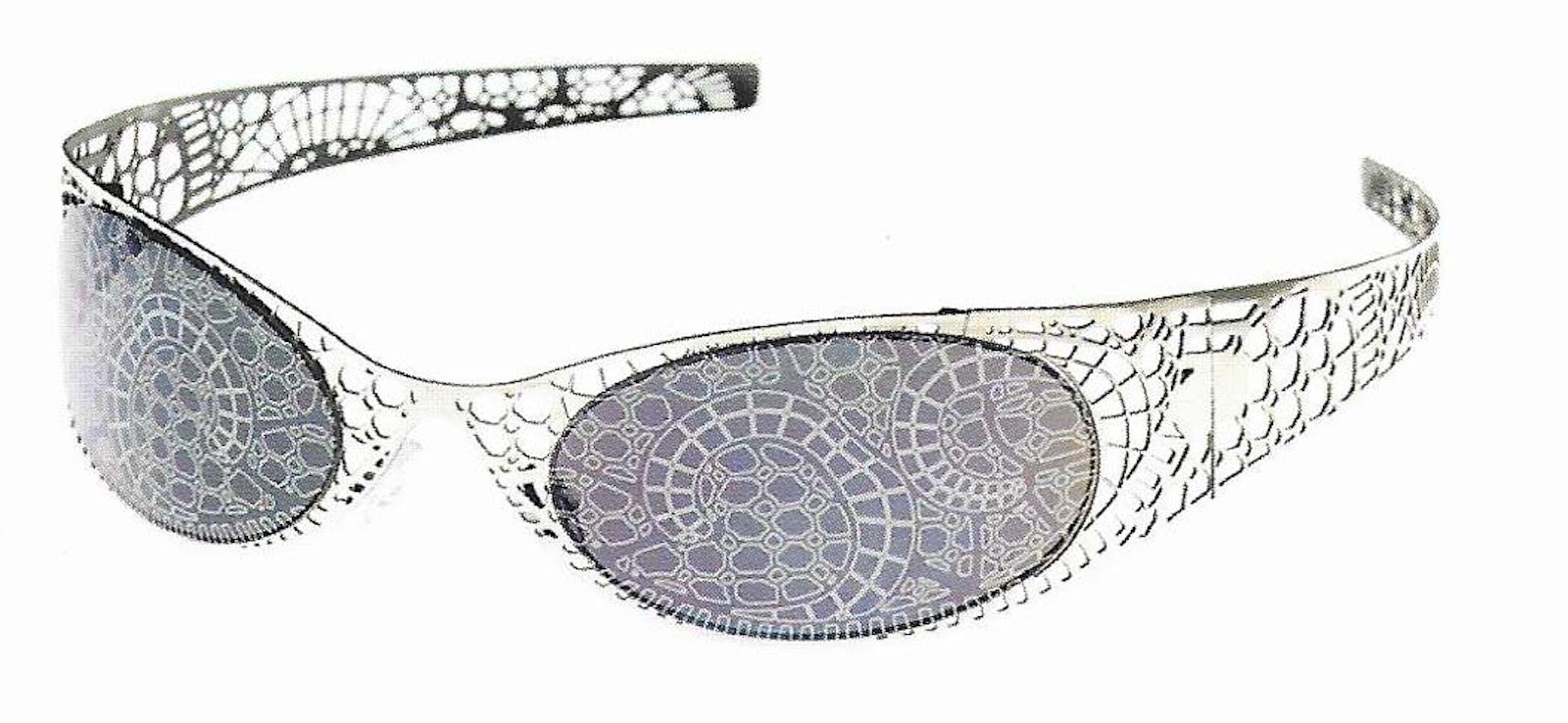de Velde
Lace
Who hasn't heard of Patrick Hoet's striking flat-topped glasses? Two decades ago Tom Lanoye was the perfect living advert for the Theo brand.
In the meantime these glasses have been copied time and again. But none of this is of any importance to Hoet. Hoet is a trendsetter, and aims to come out with something new every year. After all, what is originality anyway? 'I'm only doing what I've been taught.' Patrick had believed that his Brainwear (glasses with a frame that runs back over the middle of the head) was original - until he came across a drawing from about 200 years ago.
Hoet' s designs are characterised by the experimental use of materials and techniques. Hoet was among the first to use titanium, and to cut out the frames with a laser. Hoet Design, the design bureau he operates with daughter Bieke and Ti Vandenbroucke, no longer confines itself to glasses, but has been designing furniture and accessories in recent years. And all with the same experimental and innovative design character. The world exhibition in 2005 in Aichi, Japan, had as ils theme 'The Wisdom of Nature'. However, when Patrick began preparing to take part, he interpreted the theme more in the sense of authenticity. As a proud son of the city of Bruges, he senled on lace. Much more than just a souvenir for tourists, this is an ancient craft of which he is highly appreciative - he even cherishes a few masterpieces in his own collection.
The lace outlines are drawn by computer, which is as intricate a job as lace-making itself, because every little hole has to be drawn separately. The print is then applied to the stainless steel. All the unprinted areas are then etched away in the etching bath. The original model was intended as a tiara, but in the end he brought out two: one with lenses and one without.
The lenses in the lace glasses are made according to an Italian patent. The printing applied to these polycarbonate lenses with vacuum coating is only visible from the outside, and this allowed Hoet to apply the lace design over the whole surface of the glasses.
The model without lenses consists solely of metal in a lace pattern, and it shades the eyes too. Does this matter? Is it still functional? The lace model was designed as a pair of sunglasses. Only a fraction of the light permeates through the little holes, and this is less tiring on the eyes. As for intenference, our brains are clever enough to remove the interfering elements from our sight.
Only one thousand examples of these glasses have been made and sold. And, typical of Hoet, despite their success, no more of them will be made. The new collections are out. The '2005 Henry van de Velde Award for Best Product' has never been so dated and strictly tied to a single year. However, you may still be able to buy a pair from a suspicious character in Japan, because all the examples that were on exhibition there 'walked'.
Never mind ... Hoet Design has used the same designs for two other objects in the meantime: the Embrace armband and Shade sun visor. For the time being, these are exclusively available in the Hoet Design shops in Brussels and Bruges.


